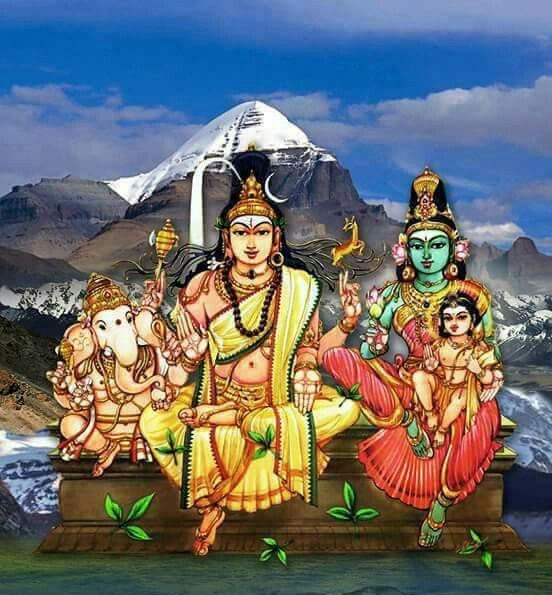Maha Shivaratri 2024 Fasting Procedure, Important Worship Timings, and Benefits

Maha Shivaratri is one of the most significant festivals dedicated to Lord Shiva, observed by devotees with fasting and night-long vigil. It is believed that worshiping Lord Shiva on Maha Shivaratri with devotion washes away sins, brings prosperity, and grants liberation (Moksha). In 2024, Maha Shivaratri will be celebrated on Friday, March 8.
Fasting Procedure for Maha Shivaratri 2024
- Preparation for the Fast:
- Abstinence from Grains and Salt: Devotees traditionally avoid eating grains, lentils, rice, and regular salt during the fast. Instead, they consume light fruits, milk, and dishes prepared with rock salt (sendha namak) if necessary.
- Spiritual Cleanliness: Devotees take a bath early in the morning and wear clean clothes, often white or light-colored, as a symbol of purity.
- Types of Fasts:
- Nirjala Fast (without water): Some devotees opt for a strict fast, abstaining from both food and water throughout the day.
- Phalahar Fast (only fruits and milk): Many devotees consume fruits, milk, and water throughout the day while avoiding grains and heavy foods.
- Partial Fast: Some individuals may follow a light fast, consuming only one meal of simple food such as sabudana, fruits, or vegetables in the evening.
- Night Vigil (Jagaran):
- Devotees observe Jagaran (staying awake all night) to offer continuous prayers and chant Lord Shiva’s names throughout the night. Some meditate or perform bhajans (devotional songs).
- It is customary to visit Shiva temples or perform puja at home every Prahar (quarter of the night), offering milk, water, and bilva leaves to the Shiva Linga.
- Breaking the Fast:
- The fast is typically broken the next morning after performing prayers and consuming prasad (consecrated food). Devotees first offer food to Lord Shiva before partaking.
Important Worship Timings for Maha Shivaratri 2024
- Chaturdashi Tithi Begins: March 8, 2024, at 8:40 PM
- Chaturdashi Tithi Ends: March 9, 2024, at 5:43 PM
Best Time for Worship (Nishita Kaal Puja Time):
- Nishita Kaal (Midnight Puja): March 9, from 12:06 AM to 12:54 AM
- Duration: 48 minutes
Other Significant Timings:
- First Prahar Puja: 6:32 PM to 9:43 PM (March 8)
- Second Prahar Puja: 9:43 PM to 12:54 AM (March 9)
- Third Prahar Puja: 12:54 AM to 4:05 AM (March 9)
- Fourth Prahar Puja: 4:05 AM to 7:15 AM (March 9)
How to Perform Maha Shivaratri Puja
- Early Morning Rituals:
- After taking a bath, worship Lord Shiva with water, milk, honey, and curd. Offer Bilva (bael) leaves, dhatura (thorn apple), sandalwood paste, flowers, and incense.
- Recite Shiva Mantras like the Maha Mrityunjaya Mantra and the Panchakshara Mantra (“Om Namah Shivaya”).
- Abhishekam (Shiva Linga Bathing):
- Each Prahar (quarter of the night) is considered highly auspicious to perform the Abhishekam (sacred bath) to the Shiva Linga.
- Use water, milk, honey, ghee, sugarcane juice, and bilva leaves during the Abhishekam.
- Chant “Om Namah Shivaya” or recite the Rudram Chamakam during the worship.
- Night-Long Vigil (Jagaran):
- Stay awake throughout the night, meditating on Lord Shiva’s divine form. Engage in reciting or listening to devotional hymns like the Shiva Tandava Stotram or Shiva Chalisa.
- Participate in bhajans, kirtans, or group prayers either at home or in temples.
- Final Morning Puja:
- Offer the final puja in the morning after staying awake all night. Break the fast with prasad after the completion of the puja.
Benefits of Observing Maha Shivaratri
- Spiritual Purification: Observing the fast and worship on Maha Shivaratri purifies the mind, body, and soul, removing negative karma and past sins.
- Attaining Divine Grace: Worshipping Lord Shiva on this day is believed to invoke his special blessings, ensuring prosperity, longevity, and protection from adversities.
- Health and Longevity: It is believed that sincere devotion on this day grants good health, freedom from diseases, and a long, happy life.
- Overcoming Obstacles: Prayers on Maha Shivaratri help in overcoming challenges, removing fear, and granting inner strength and courage to face difficulties.
- Liberation (Moksha): Maha Shivaratri is considered the best day for spiritual awakening, leading to the ultimate goal of Moksha (liberation from the cycle of birth and death).
- Protection from Planetary Afflictions: Worshipping Lord Shiva on this day mitigates the negative effects of planetary influences, especially those related to Saturn (Shani).
Conclusion
Maha Shivaratri is a powerful day to connect with Lord Shiva, purify the soul, and seek divine blessings. Through fasting, night vigil, and dedicated worship, devotees experience deep spiritual benefits and blessings of prosperity, health, and liberation. The observance of this sacred day with sincerity and devotion is said to bring peace, harmony, and fulfillment in life.




